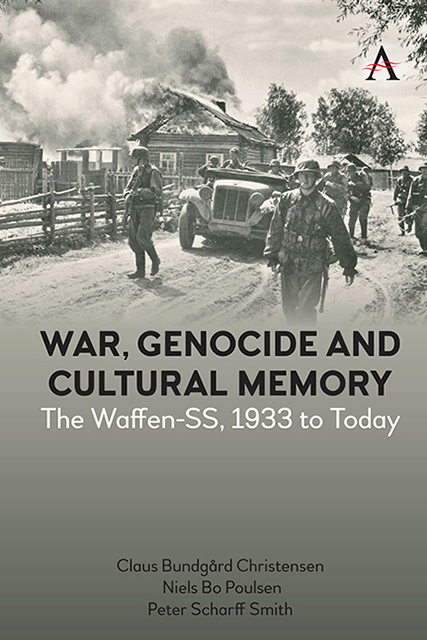Book contents
- Frontmatter
- Contents
- About the Authors
- Foreword
- Chapter One Introduction
- Part I The Organisational and Military History of the Waffen-SS
- Part II Ideology, Discipline and Punishment in the Waffen-SS
- Part III A European Nazi Army: Foreigners in the Waffen-SS
- Part IV Soldiers and War Criminals
- Part V Waffen-SS After 1945
- Epilogue The Nazi’s European Soldiers
- Appendix
- List of Abbreviations
- Bibliography
- Index
Part III - A European Nazi Army: Foreigners in the Waffen-SS
Published online by Cambridge University Press: 08 June 2023
- Frontmatter
- Contents
- About the Authors
- Foreword
- Chapter One Introduction
- Part I The Organisational and Military History of the Waffen-SS
- Part II Ideology, Discipline and Punishment in the Waffen-SS
- Part III A European Nazi Army: Foreigners in the Waffen-SS
- Part IV Soldiers and War Criminals
- Part V Waffen-SS After 1945
- Epilogue The Nazi’s European Soldiers
- Appendix
- List of Abbreviations
- Bibliography
- Index
Summary
From Racial Community to Multi-ethnic Army – Waffen-SS Turns European
As early as in the mid-1930s, SS began admitting non-German citizens into its ranks. These were, primarily, ethnic Germans from adjacent states, but from 1938 the organisation officially welcomed other nationalities of the ‘Nordic-Germanic race.’ Initially, this meant citizens from the northern and western neighbouring countries. The key notion, though, remained that the SS should be an exclusive order into which only racially pure Germans and other Germanic volunteers sharing the Nazi creed would be allowed.
In 1941-2, Waffen-SS began to adjust these conditions. Standarte Nordwest and various national legions introduced men into the military branch of the SS who did not live up to the order's demands for physical height, race and ideological determination. At the same time, an element of compulsion was added to the enrolment methods. This happened for example, in occupied Yugoslavia, where Volksdeutsche men were forced to serve with the Waffen-SS. From there, this trend spread to other countries with large ethnic German minorities that might be coerced or manipulated into joining. As mentioned previously, more or less compulsory methods had already been used to recruit personnel in Germany, but now this began on a massive scale. In the last war-years, tens of thousands of German conscripts were systematically transferred to the Waffen-SS without the slightest trace of voluntariness. Additionally, nationalities that were formerly looked down upon – on account of being of a ‘lower race’ – were now recruited. These included Ukrainians, Russians, Central-Asian Muslims as well as Serbs and Bosnians.
Although a certain mollification characterised the attitude to nationalities, the Waffen-SS, as well as the SS per se, remained an organisation which was controlled from Germany and by Germans. The very top was entirely German, and as a general rule, non-German commanders were to be found at no higher levels than company or, at the most, occasionally battalion. Thus, the history of the non-German citizens in the Waffen-SS must be seen in the context of an ethnically stratified organisationcharacterised by tensions among ethnic groups due to language, culture and gradings in the racial hierarchy.
According to SS propaganda, the Waffen-SS’ many ethnic groups were united in their struggle against the ‘godless bolshevism’ and the equally corrupt ‘American materialism’ and fought to protect European culture and values. This is a story that can be found, even today, in many popular historical works on the military branch of the SS.
- Type
- Chapter
- Information
- War, Genocide and Cultural MemoryThe Waffen-SS, 1933 to Today, pp. 157 - 158Publisher: Anthem PressPrint publication year: 2022

